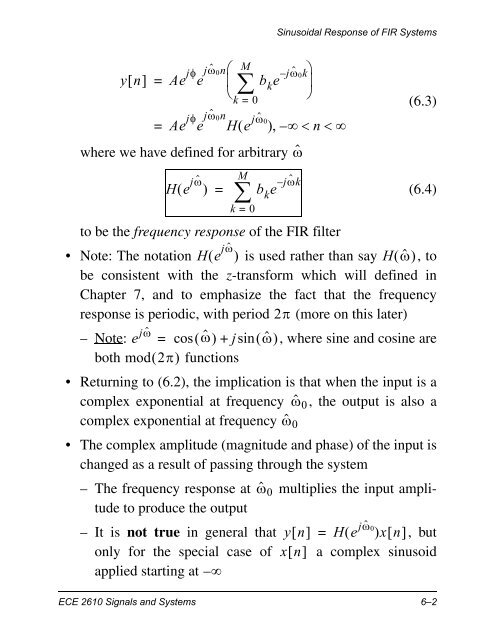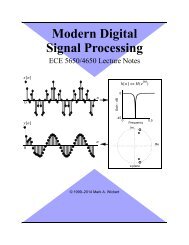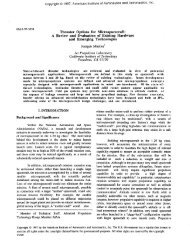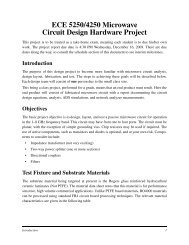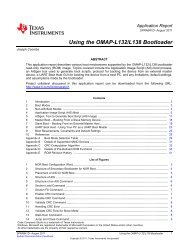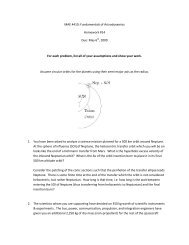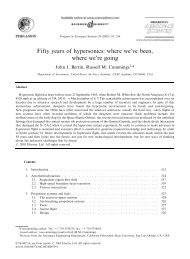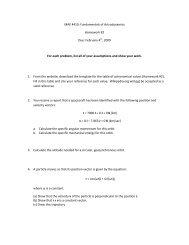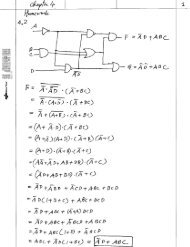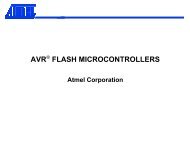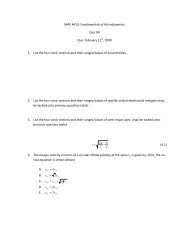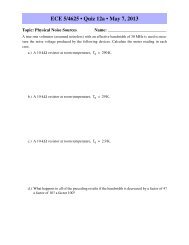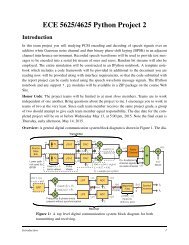You also want an ePaper? Increase the reach of your titles
YUMPU automatically turns print PDFs into web optimized ePapers that Google loves.
Sinusoidal <strong>Response</strong> <strong>of</strong> <strong>FIR</strong> Systemsyn =Ae j e jˆ 0nk = 0b ke j– ˆ 0kAe j e jˆ 0n jˆ= He 0– n where we have defined for arbitrary ˆM(6.3)He jˆM = b ke jk = 0– ˆ k(6.4)to be the frequency response <strong>of</strong> the <strong>FIR</strong> filter• Note: The notation He jˆ is used rather than say Hˆ, tobe consistent with the z-transform which will defined inChapter 7, and to emphasize the fact that the frequencyresponse is periodic, with period 2 (more on this later)– Note: e jˆ = cosˆ+jsinˆ, where sine and cosine areboth mod2functions• Returning to (6.2), the implication is that when the input is acomplex exponential at frequency ˆ 0 , the output is also acomplex exponential at frequency ˆ 0• The complex amplitude (magnitude and phase) <strong>of</strong> the input ischanged as a result <strong>of</strong> passing through the system– The frequency response at ˆ 0 multiplies the input amplitudeto produce the output– It is not true in general that yn = He jˆ 0xn , butonly for the special case <strong>of</strong> xn a complex sinusoidapplied starting at –ECE 2610 Signals and Systems 6–2


